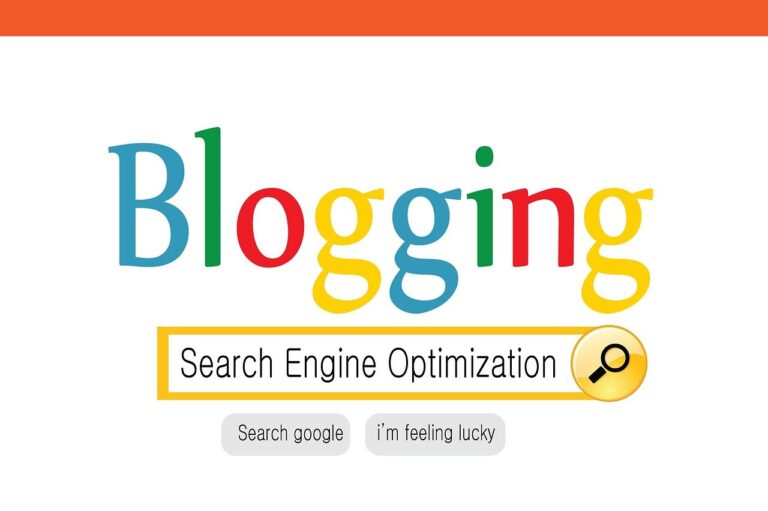Ancient Holistic Healing Practices
Ancient civilizations developed sophisticated holistic healing practices that addressed physical, mental, and spiritual well-being. These traditional approaches laid the foundation for many modern holistic health concepts and continue to influence healthcare today.
Early Shamanistic Traditions
Shamanism represents one of the oldest forms of holistic healing. Shamans acted as intermediaries between the physical and spiritual realms, believing that illness often stemmed from spiritual imbalances. They employed various techniques to restore harmony:
- Ritualistic ceremonies
- Herbal remedies
- Chanting and drumming
- Spirit animal guidance
Shamanic practices emphasized the interconnectedness of mind, body, and spirit. You can see echoes of this holistic approach in modern alternative medicine therapies.
Shamans often entered altered states of consciousness to diagnose and treat ailments. This practice highlights the importance of mental and spiritual aspects in the healing process.
Traditional Chinese Medicine
Traditional Chinese Medicine (TCM) developed over thousands of years, offering a comprehensive system of diagnosis and treatment. Key concepts include:
- Qi: The vital life force
- Yin and Yang: Complementary opposites
- Five Elements: Wood, Fire, Earth, Metal, Water
TCM practitioners use various methods to restore balance:
- Acupuncture
- Herbal medicine
- Moxibustion
- Tai chi and qigong
These techniques aim to harmonize qi flow and balance yin and yang energies within the body. TCM’s holistic approach considers physical symptoms alongside emotional and environmental factors.
Ayurveda: The Science Of Life
Ayurveda, originating in ancient India, is a holistic healing system based on the balance of three doshas: Vata, Pitta, and Kapha. Each person has a unique combination of these energies.
Ayurvedic treatments include:
- Herbal remedies
- Dietary adjustments
- Yoga and meditation
- Massage and body treatments
Practitioners assess your individual constitution to create personalized treatment plans. This approach emphasizes prevention and maintaining overall health rather than just treating symptoms.
Ayurveda recognizes the connection between mind, body, and spirit in achieving optimal health. Its principles continue to influence modern wellness practices.
Indigenous Healing Practices Around The World
Indigenous cultures worldwide developed unique holistic healing traditions based on their local environments and spiritual beliefs. Common elements include:
- Use of local medicinal plants
- Rituals and ceremonies
- Connection to nature and ancestral wisdom
- Community involvement in healing processes
For example, Native American healing practices often involve sweat lodges, smudging with sage, and the use of sacred herbs. African traditional medicine incorporates divination, herbalism, and spiritual cleansing rituals.
These practices emphasize the importance of community and spiritual balance in maintaining health. Many indigenous healing methods have been passed down through generations and continue to be used alongside modern medical treatments in some communities.
The Middle Ages To Renaissance: Transition And Transformation
The period from the Middle Ages to the Renaissance saw significant shifts in medical practices and knowledge. Herbal remedies, Islamic influences, and rediscovered ancient wisdom shaped a new era of healing.
Medieval European Herbalism
Medieval European herbalism relied heavily on plant-based remedies. Monasteries played a crucial role in preserving and advancing herbal knowledge. Monks cultivated medicinal herbs in their gardens and recorded their uses in herbals.
The Doctrine of Signatures influenced herbal medicine during this time. This belief suggested that plants resembling body parts could cure ailments in those areas.
Common herbs used included:
- Chamomile for digestive issues
- Lavender for headaches and insomnia
- Garlic for infections
Herbal remedies were often combined with religious practices and prayers, reflecting the spiritual nature of medieval healing.
The Influence Of Islamic Medicine
Islamic medicine significantly advanced medical knowledge during the Middle Ages. Muslim scholars translated and preserved ancient Greek and Roman medical texts, adding their own observations and discoveries.
Key contributions included:
- Development of the first hospitals
- Advancements in surgical techniques
- Introduction of new medicinal plants from Asia
Notable Islamic physicians like Avicenna and Rhazes wrote influential medical texts that were studied in European universities for centuries.
Islamic medicine emphasized the importance of diet, hygiene, and preventive care. This holistic approach influenced European medical practices as knowledge spread through trade and cultural exchanges.
The Renaissance Revival Of Ancient Knowledge
The Renaissance marked a revival of interest in ancient Greek and Roman medical knowledge. Humanist scholars rediscovered and translated classical medical texts, challenging medieval beliefs and practices.
Key developments included:
- Renewed focus on anatomy and dissection
- Emphasis on observation and experimentation
- Integration of art and science in medical illustrations
Andreas Vesalius, often called the father of modern anatomy, published detailed anatomical drawings that revolutionized medical understanding.
The printing press played a crucial role in disseminating medical knowledge. It allowed for wider distribution of medical texts and facilitated the exchange of ideas among scholars across Europe.
This revival of ancient knowledge, combined with new discoveries, laid the foundation for modern medicine and holistic healing approaches.
Holistic Healing In The 19th And Early 20th Centuries

The 19th and early 20th centuries saw a revival of interest in holistic healing approaches. Alternative medical systems emerged as a response to conventional medicine’s limitations. Eastern practices also began influencing Western healthcare during this period.
The Rise Of Homeopathy
Homeopathy, developed by Samuel Hahnemann in the late 18th century, gained significant popularity in the 19th century. This system is based on the principle of “like cures like” and uses highly diluted substances.
Homeopathy attracted many followers due to its gentler approach compared to harsh medical treatments of the time. It spread rapidly across Europe and the United States.
By the mid-1800s, homeopathic medical schools and hospitals were established in many countries. The American Institute of Homeopathy, founded in 1844, became the first national medical association in the U.S.
Naturopathy And Nature Cure Movements
Naturopathy emerged in the late 19th century, emphasizing natural healing methods and the body’s innate ability to heal itself. Benedict Lust, known as the father of naturopathy, played a crucial role in promoting this approach.
The nature cure movement, closely related to naturopathy, gained traction in Europe and North America. It advocated for treatments like hydrotherapy, diet, and exercise.
These movements emphasized preventive care and holistic well-being, contrasting with the symptom-focused approach of conventional medicine. Naturopathic colleges were established, training practitioners in various natural healing methods.
The Influence Of Eastern Practices On Western Medicine
The late 19th and early 20th centuries saw increased interest in Eastern healing practices among Western audiences. Yoga and meditation began to gain popularity in Europe and North America.
Acupuncture and traditional Chinese medicine attracted attention from Western medical practitioners. Some doctors began incorporating these techniques into their practices.
The Theosophical Society, founded in 1875, played a role in introducing Eastern spiritual and healing concepts to the West. This cultural exchange influenced the development of holistic health approaches in Western countries.
Modern Adaptations And Integrations

Ancient healing practices are being adapted and integrated into contemporary healthcare systems. Scientific validation, integrative approaches, and formal education programs are reshaping holistic healing for modern applications.
The Role Of Scientific Research In Validating Ancient Practices
Scientific research has played a crucial role in validating many ancient healing practices. Rigorous studies have examined the efficacy of traditional remedies and techniques, providing evidence-based support for their integration into modern healthcare.
You can find numerous examples of ancient healing traditions influencing modern medical practice. For instance, research has shown the benefits of acupuncture for pain management and the positive effects of mindfulness meditation on stress reduction.
Clinical trials have also explored the therapeutic potential of herbal medicines. Many pharmaceutical drugs have roots in traditional plant-based remedies, demonstrating the ongoing relevance of ancient knowledge in modern drug discovery.
Integrative Medicine: Combining Conventional And Holistic Approaches
Integrative medicine seeks to combine the best of conventional and holistic approaches to healthcare. This model recognizes the importance of treating the whole person – body, mind, and spirit – rather than focusing solely on symptoms or specific ailments.
You’ll find that integrative medicine practitioners often incorporate traditional healing practices alongside modern medical treatments. For example, cancer patients may receive chemotherapy while also engaging in acupuncture for symptom management and meditation for stress reduction.
Many hospitals and clinics now offer integrative medicine programs, providing patients with a wider range of treatment options. This approach allows for personalized care plans that address individual needs and preferences.
The Growth Of Holistic Health Education And Certification
As interest in holistic healing grows, so does the need for formal education and certification in these practices. You’ll find an increasing number of programs offering training in various aspects of holistic health.
Universities and colleges now offer degrees in complementary and alternative medicine, integrative health, and related fields. These programs provide students with a solid foundation in both traditional healing practices and modern scientific principles.
Professional organizations have established certification processes for practitioners of holistic modalities. These certifications help ensure quality standards and ethical practices in the field.
Continuing education opportunities allow healthcare professionals to incorporate holistic approaches into their existing practices. This ongoing learning helps bridge the gap between conventional and holistic medicine.
Key Traditions Shaping Contemporary Holistic Medicine
Holistic healing traditions have evolved over centuries, incorporating diverse practices from around the world. These approaches emphasize treating the whole person – mind, body, and spirit – rather than just symptoms.
Acupuncture And Its Modern Applications
Acupuncture, an ancient Chinese practice, involves inserting thin needles into specific points on the body. Modern research has shown its effectiveness for pain management and various health conditions.
You might find acupuncture used in hospitals and clinics for:
- Chronic pain relief
- Migraine treatment
- Nausea reduction during chemotherapy
Western medical practitioners often integrate acupuncture with conventional treatments. This blend of Eastern and Western approaches exemplifies the evolving nature of holistic medicine.
Herbal Medicine In The 21st Century
Herbal remedies have been used for thousands of years across cultures. Today, you can find standardized herbal supplements in health food stores and pharmacies.
Popular herbs in modern holistic medicine include:
- Echinacea for immune support
- St. John’s Wort for mild depression
- Ginkgo biloba for cognitive function
Scientific research continues to validate many traditional uses of herbs. However, it’s crucial to consult healthcare professionals before using herbal remedies, as they can interact with conventional medications.
Mind-Body Practices: Yoga, Meditation, And Beyond
Mind-body practices focus on the connection between mental and physical health. Yoga and meditation are increasingly integrated into healthcare settings, recognizing their benefits for stress reduction and overall well-being.
You might encounter these practices in:
- Stress management programs
- Pain clinics
- Corporate wellness initiatives
Other mind-body techniques gaining popularity include tai chi, qigong, and mindfulness-based stress reduction (MBSR). These practices emphasize conscious breathing, gentle movement, and focused attention to promote healing.
Energy Healing: Reiki And Other Modalities
Energy healing modalities are based on the concept of manipulating the body’s energy fields to promote health. Reiki, one of the most well-known energy healing practices, was developed in Japan.
Energy healing techniques often involve light touch or hands-off approaches, as well as visualization and intention-setting. Other techniques include balancing energy centers or chakras.
While scientific evidence for energy healing is limited, many people report feelings of relaxation and well-being after sessions. Some hospitals now offer Reiki as a complementary therapy for patients undergoing cancer treatment or recovering from surgery.
The Enduring Relevance Of Holistic Healing

Holistic healing continues to play a significant role in modern healthcare. Its integration of mind, body, and spirit approaches offers valuable complementary treatments to conventional medicine.
The Increasing Popularity Of Holistic Practices In Modern Healthcare
Holistic practices have gained substantial traction in recent years. More healthcare providers are incorporating complementary and alternative medicine (CAM) into their treatment plans.
This shift reflects a growing recognition of the benefits of addressing health from multiple angles. Many patients now seek out holistic options alongside conventional treatments.
Popular practices include acupuncture, meditation, and herbal remedies. These methods often focus on prevention and wellness maintenance, appealing to those looking for proactive health management.
Insurance companies have started covering certain holistic treatments, making them more accessible. This change indicates a broader acceptance of these practices within the medical community.
Case Studies Of Successful Integrative Treatments
Numerous case studies demonstrate the effectiveness of integrative approaches. One notable example involves chronic pain management. Patients combining conventional pain medications with acupuncture and mindfulness techniques often report significant improvements in their quality of life.
Another case highlights the benefits of herbal medicine in supporting cancer treatment. Some oncology centers now offer herbal supplements to help manage chemotherapy side effects, leading to better treatment adherence and patient outcomes.
Integrative treatments have also shown promise in mental health care. Combining traditional psychotherapy with mindfulness practices and nutrition counseling has yielded positive results for patients with anxiety and depression.
The Future Of Holistic Healing: Trends And Predictions
The future of holistic healing looks bright, with several emerging trends. You can expect to see increased research into the efficacy of various holistic practices, providing more evidence-based support for their use.
Technology will likely play a larger role in holistic healing. Virtual reality meditation sessions and AI-powered personalized wellness plans are just the beginning. These innovations aim to make holistic practices more accessible and tailored to individual needs.
Cultural healing traditions are gaining recognition in Western medicine. You may see more integration of Indigenous healing practices and traditional Chinese medicine into mainstream healthcare, fostering a truly global approach to wellness.
Conclusion

Holistic healing has come a long way from its ancient roots. You can see the influence of shamanic and Hippocratic traditions in modern healthcare approaches.
These age-old practices emphasize treating the whole person, not just symptoms. This aligns with the holistic health philosophy that considers physical, mental, and spiritual well-being.
Modern medicine has incorporated many elements from traditional healing. You’ll find examples in pain management techniques, mindfulness practices, and herbal remedies.
The integration of ancient wisdom and modern science continues to evolve. It offers you a more comprehensive approach to health and wellness.
As you explore holistic healing options, remember the rich history behind them. These practices have stood the test of time, adapting to new discoveries while maintaining their core principles.
Your health journey can benefit from this blend of old and new. Consider how holistic approaches might complement your current healthcare regimen.
Frequently Asked Questions

Traditional healing practices have shaped modern medicine in profound ways. Ancient techniques continue to influence contemporary approaches, offering valuable insights into holistic health and wellness. These questions explore the evolution and integration of age-old healing wisdom.
What distinguishes traditional healing practices from contemporary medical approaches?
Traditional healing emphasizes a holistic view of health, considering the interconnectedness of mind, body, and spirit. In contrast, contemporary medicine often focuses on specific symptoms or diseases.
Ancient healing methods incorporated spiritual practices like prayer, meditation, and energy work alongside physical treatments. Modern approaches typically rely more heavily on scientific evidence and technological advancements.
How have ancient holistic healing techniques influenced current medical practices?
Many modern treatments have roots in traditional medicine. For instance, herbal remedies used for centuries have been studied and refined into pharmaceutical drugs.
Mindfulness and meditation, derived from ancient spiritual practices, are now widely recognized for their health benefits. Acupuncture, originating in traditional Chinese medicine, has also gained acceptance in Western healthcare settings.
Can you identify some primary holistic healing systems that originated in antiquity?
Ayurveda, an ancient Indian system, focuses on balance between mind, body, and spirit through diet, herbs, and lifestyle practices. Meanwhile, Traditional Chinese Medicine uses acupuncture, herbal remedies, and qigong to promote health.
Shamanic healing traditions, found in many cultures worldwide, involve spiritual and energetic practices. Greek medicine, influenced by Hippocrates, also emphasized the body’s natural healing abilities.
In what ways are the principles of traditional medicine being integrated into modern healthcare?
Integrative medicine combines conventional and traditional approaches. Many hospitals now offer complementary therapies like acupuncture, massage, and meditation alongside standard treatments.
Naturopathy is another example, incorporating traditional healing principles into a modern framework. It emphasizes natural remedies and the body’s innate healing abilities.
What are the key benefits of incorporating traditional medicine into today’s therapeutic strategies?
Traditional approaches often address whole-person wellness, considering physical, emotional, and spiritual aspects of health. This can lead to more comprehensive and personalized care.
Many traditional remedies also have fewer side effects than pharmaceutical drugs. Integrating these practices can provide additional options for managing chronic conditions and improving quality of life.
How has the understanding and application of holistic healing evolved over the course of history?
Ancient healing practices were often based on cultural beliefs and observations of nature. Scientific methods have been applied to study and validate traditional techniques.
Modern holistic healing incorporates evidence-based practices while still honoring the wisdom of ancient traditions. This evolution has led to a more nuanced understanding of the complex interactions between mind, body, and environment in health and healing.






